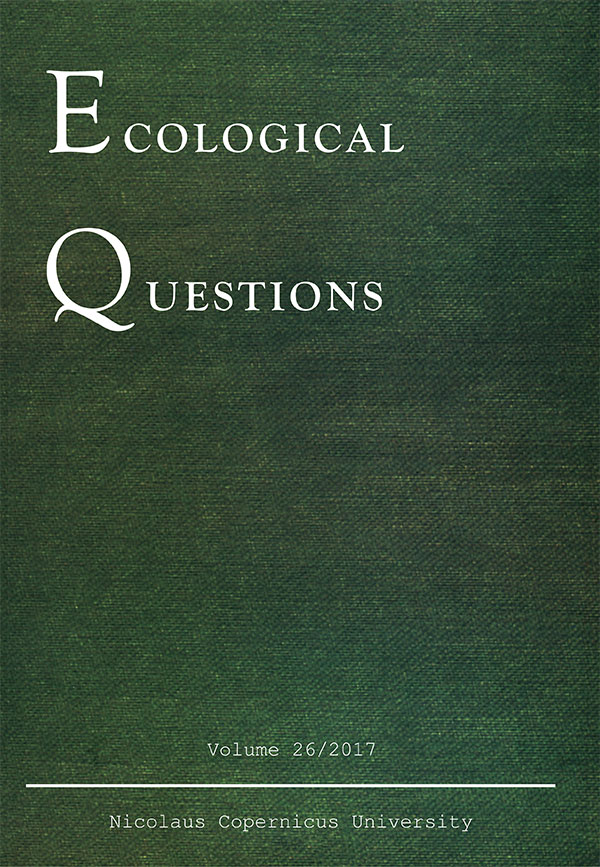Peculiarities of contemporary surface spore-pollen spectra from southern Siberia (Tyva and Khakassia republics)
DOI:
https://doi.org/10.12775/EQ.2017.015Keywords
pollen, spores, subrecent pollen spectra, Siberia, vegetationAbstract
In mountains and in intermountain depressions in the south of Western Siberia 31 contemporary (subrecent) spore-pollen spectra were collected with aim to reveal how adequate the composition of spore-pollen spectra reflects vegetation types in study area. It was found that pollen spectra from dry steppe of Tyva are characterized by dominance of Artemisia and Chenopodiaceae pollen, but more north located steppe of Khakassia – by abundance of Poaceae pollen among herbs and by considerable amount of tree pollen, mostly Betula and Pinus sylvestris. A high mountain spore-pollen spectra in Tyva are differed by dominance of Poaceae pollen and increased amount of Cyperaceae pollen with small amount of tree pollen. Spore-pollen spectra of mountain taiga are dominated by tree pollen of Pinus sibirica. Spectra with relic composition combining abundance of Artemisia pollen with increased amount of Picea and Larix pollen were found on the tops of Tannu-Ola ridge in south Tyva. The described features of modern spore-pollen spectra reflect real peculiarities of vegetation in places were these samples were collected including larch-spruce forest alternated with steppe parches on tops of Tannu-Ola ridge. Mathematical method of unconstrained cluster analysis fully conforms the grouping of modern pollen spectra according to vegetation types and hence supports the idea that spore-pollen spectra from mountain areas reflect accurately the vegetation types and composition of local plant communities.
References
Caňellas-Bolta N., Josep V.R. & Mercade V.A., 2009, Modern pollen-vegetation relationships along an altitudinal transect in the central Pyrenees (Southwestern Europe), The Holocene 19(8): 1185–1200.
Guiot J., 1990, Methodology of the last climatic cycle reconstruction from pollen data, Palaeogeography, Palaeoclimatology, Palaeoecology 80: 49–69.
Kunes P., Pelankova B., Chytry M., Jankovska V., Pokorny P. & Petr L., 2008, Interpretation of the last-glacial vegetation of eastern-central Europe using modern analogues from southern Siberia, Journal of Biogeography 35: 2223–2236.
Nakagawa T., Tarasov P.E., Nishida K., Gotanda K. & Yasuda Y., 2002, Quantitative pollen based climate reconstruction in Japan: application to surface and late Quaternary spectra, Quaternary Science Reviews 21: 327–342.
Overpeck J.T., Webb T. III & Prentice L.C., 1985, Quantitative interpretation of fossil pollen spectra, dissimilarity coefficients and the method of modern analogs, Quaternary Research 23: 87–108.
Prentice C., Guiot J., Huntley B., Jolly D. & Cheddadi R., 1996, Reconstructing biomes from palaeoecological data: a general method and its application to European pollen data at 0 and 6 ka, Climate Dynamics 12: 185–194. DOI: 10.1007/BF00211617
Downloads
Published
How to Cite
Issue
Section
Stats
Number of views and downloads: 396
Number of citations: 0



